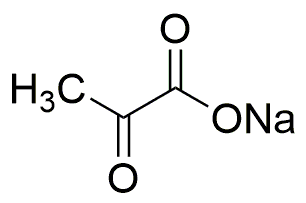Sodium pyruvate solution is widely utilized in research focused on:
- Cell Culture: It serves as a key nutrient in cell culture media, promoting cell growth and metabolism, particularly in mammalian cells.
- Metabolic Studies: Researchers use it to study metabolic pathways and cellular respiration, helping to understand energy production in cells.
- Exercise Physiology: In sports science, sodium pyruvate is investigated for its potential to enhance endurance and recovery in athletes by reducing lactic acid buildup.
- Pharmaceutical Development: It is employed in the formulation of certain medications, acting as a stabilizer or preservative, which can improve shelf life and efficacy.
- Biotechnology Applications: Sodium pyruvate is used in various biotechnological processes, including fermentation and bioprocessing, where it can serve as a carbon source for microbial growth.
General Information
Properties
Safety and Regulations
Applications
Sodium pyruvate solution is widely utilized in research focused on:
- Cell Culture: It serves as a key nutrient in cell culture media, promoting cell growth and metabolism, particularly in mammalian cells.
- Metabolic Studies: Researchers use it to study metabolic pathways and cellular respiration, helping to understand energy production in cells.
- Exercise Physiology: In sports science, sodium pyruvate is investigated for its potential to enhance endurance and recovery in athletes by reducing lactic acid buildup.
- Pharmaceutical Development: It is employed in the formulation of certain medications, acting as a stabilizer or preservative, which can improve shelf life and efficacy.
- Biotechnology Applications: Sodium pyruvate is used in various biotechnological processes, including fermentation and bioprocessing, where it can serve as a carbon source for microbial growth.
Documents
Safety Data Sheets (SDS)
The SDS provides comprehensive safety information on handling, storage, and disposal of the product.
Product Specification (PS)
The PS provides a comprehensive breakdown of the product’s properties, including chemical composition, physical state, purity, and storage requirements. It also details acceptable quality ranges and the product's intended applications.
Certificates of Analysis (COA)
Search for Certificates of Analysis (COA) by entering the products Lot Number. Lot and Batch Numbers can be found on a product’s label following the words ‘Lot’ or ‘Batch’.
*Catalog Number
*Lot Number
Certificates Of Origin (COO)
This COO confirms the country where the product was manufactured, and also details the materials and components used in it and whether it is derived from natural, synthetic, or other specific sources. This certificate may be required for customs, trade, and regulatory compliance.
*Catalog Number
*Lot Number
Safety Data Sheets (SDS)
The SDS provides comprehensive safety information on handling, storage, and disposal of the product.
DownloadProduct Specification (PS)
The PS provides a comprehensive breakdown of the product’s properties, including chemical composition, physical state, purity, and storage requirements. It also details acceptable quality ranges and the product's intended applications.
DownloadCertificates of Analysis (COA)
Search for Certificates of Analysis (COA) by entering the products Lot Number. Lot and Batch Numbers can be found on a product’s label following the words ‘Lot’ or ‘Batch’.
*Catalog Number
*Lot Number
Certificates Of Origin (COO)
This COO confirms the country where the product was manufactured, and also details the materials and components used in it and whether it is derived from natural, synthetic, or other specific sources. This certificate may be required for customs, trade, and regulatory compliance.


